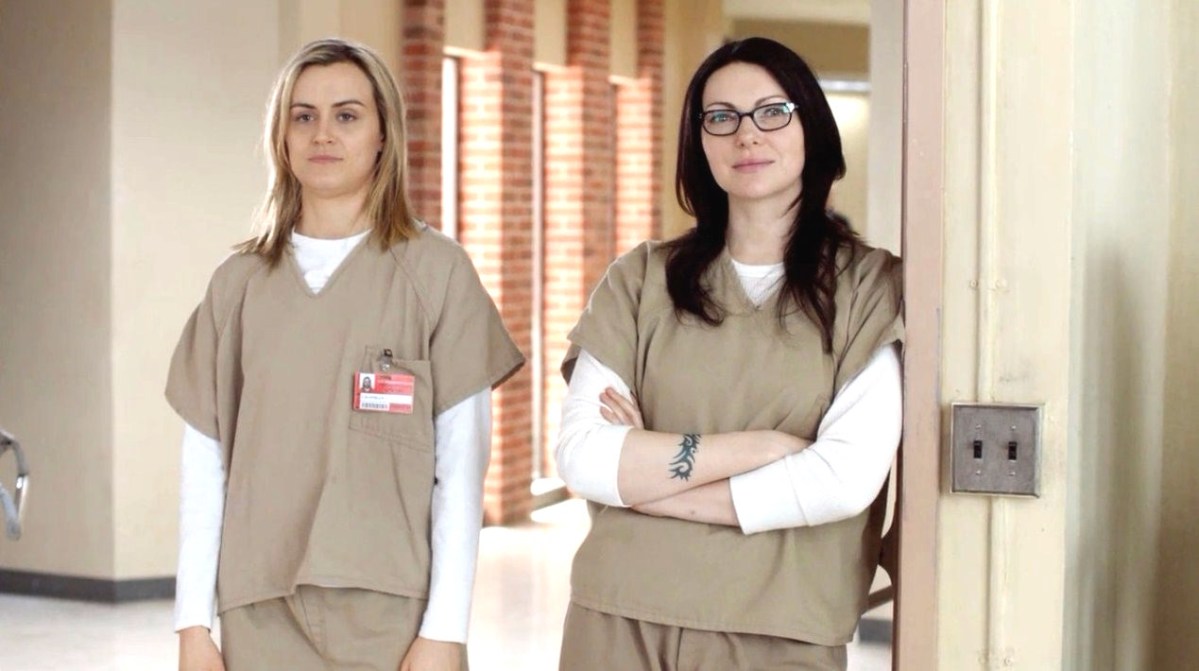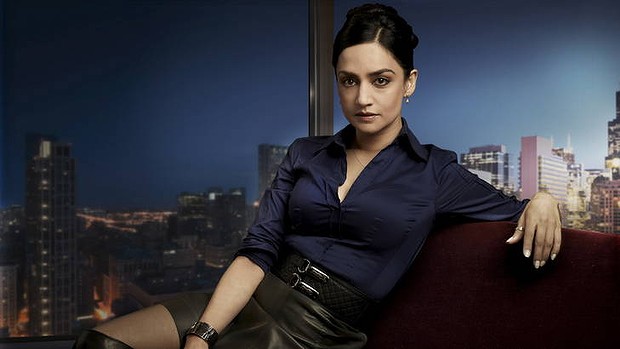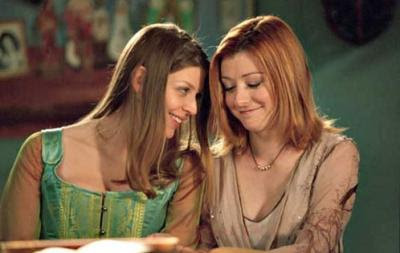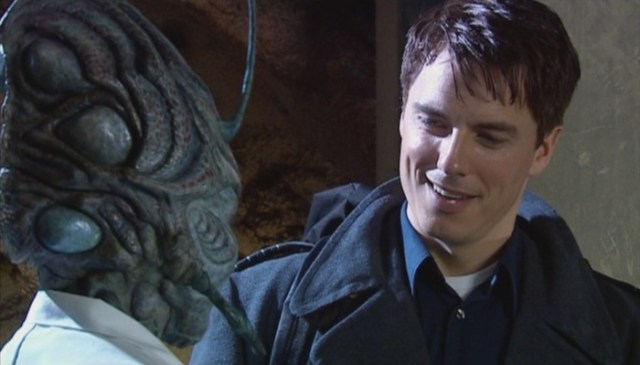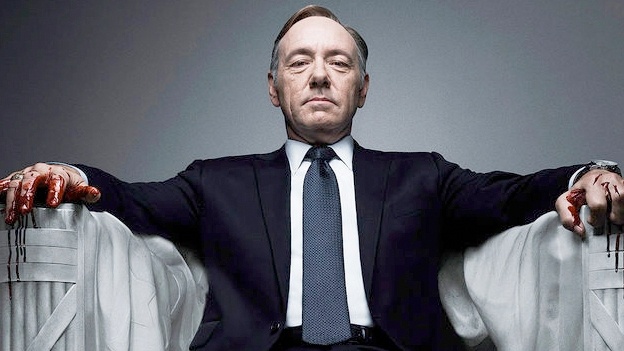According to the GLAAD “Where Are We on TV?” 2013-2014 report, it was found 3.3% of the series regulars on scripted prime-time broadcast television schedule were LGBT characters. For that same year, there were 42 LGBT characters on scripted primetime cable television. In regards to sexual orientation, of the 796 series regulars on primetime broadcast television, 771 were counted as straight (97%). Of those numbers, gay men made up 46% of those characters, and lesbian characters comprised 30%. When you break down the numbers further, of those 42 LGBT characters, eight were bisexual women. Only two were bisexual men.
We already know the numbers behind why representation is so important, like how the sexual objectification of women in media significantly contributes to mental health problems, eating disorders, and low self-esteem, how television exposure predicts a decrease in self-esteem for white girls and black girls and boys (while supporting an increase for white boys), or how, if representation attaches to power, then the invisibility of LGBT people in media evidences the powerlessness of the queer community.
There have been bisexual characters on television, but so often even those representations are problematic and lackluster: from supporting the “cheating and confused” trope, to “I’m straight but I kiss girls” defense, to the “I don’t discriminate” label refusal, bisexual representation still leaves a lot to be desired.
This goes even further when you start examining how bi men and women are portrayed. Rarely do bi men talk about their “gay phase,” while bi women are rarely villainous in their sexuality. Bi women are often slotted as lesbians once they start dating women, and bi men rarely make an appearance at all.
Let’s begin by examining some of these tropes through the characters that we love (and some we love to hate).
Bi women may have more parts on television than bi men, but it’s not always to their benefit. They’re more likely to have their bisexuality used as fanservice or a ratings grab (such as Thirteen on House, where she has sex with women on-screen but her primary romantic relationships are with men). This can also be seen with Daenerys Stormborn on Game of Thrones, a show that already enjoys utilizing sexual exploitation for entertainment. Daenerys has and enjoys sex with Doreah and Irri, her female handmaidens, but her only recognized relationships are with men. In The O.C.’s second season, we’re introduced to Alex, also played by Olivia Wilde, as the bisexual love interest for Marissa. This inevitably falls apart, with Marissa declaring that she was always in love with on-again off-again boyfriend Ryan, and Alex quickly disappears after that.
The fetishization of bisexual women and the trope of “I kissed a girl but I’m still straight” is directly connected to misogyny as a whole, when a woman’s sexual pleasure is objectified and consumed by its (assumed) straight male audience. What we’re left with is women who kiss and even fall in love with other women but, at the end of the day, are “straight.”
Bi women also tend to fall into the trope of never admitting their bisexuality. On The Good Wife, Kalinda Sharma has relationships with both men and women, but never admits to bisexuality. When asked by Lana, a female FBI agent trying to seduce her, why she likes sex with men, Kalinda replies, “I don’t distinguish.” She continues by explaining, “Italian, Mexican, Thai … why does one choose one food over the other?” While the actress, Archie Punjabi, has openly talked about her character’s bisexuality in multiple interviews, Kalinda herself shies away from the label.
The same reluctance to say the word “bisexual” and the assumption of choosing a side is also prevalent in television. Piper on Orange Is The New Black studiously avoids identifying herself as bisexual, despite having canon relationships with men and women, and makes multiple pronouncements about being “a former lesbian” and, “ I like hot people. What can I say? I’m shallow.” This also connects to the trope that bisexuals are promiscuous and prone to cheating (see Barbara Kean in Gotham, who also never calls herself bisexual but has an affair with her former girlfriend, unable to remain faithful to her fiancé, Jim Gordon).
Samantha Jones, the sex-positive go-getter from Sex and the City, starts having an on-screen relationship with a woman and at one point blurts out, ““What am I supposed to say? ‘Hi, this is my lesbian lover. And P.S. I’m done with dick?’” On The L Word, two canon bisexual women (Alice and Jenny) have either admitted or are seen having relationships with men and women; however, as the show progresses, they either never express sexual interest in men or start identifying as lesbians entirely.
Willow Rosenberg, one of my favorite characters on one of my favorite TV shows, Buffy the Vampire Slayer, has canonical relationships with men while hinting that she could possibly be bi (upon seeing her evil vampiric self, she deduces that she might be “kind of gay”). However, once she begins a relationship with Tara, she considers herself “just gay now” and, when approached with the possibility of being attracted to a man, she scoffs because “duh, a lesbian!”
This flip-flopping ignores the reality that bisexuality exists, even when that bisexuality is clear in canon. This erasure is even more insidious because it’s under the guise of more inclusive representation for the LGBT community, even when that “B” is conspicuously absent.
Male bisexual characters have different tropes to contend with. The first has to do with labeling, but also with sexual promiscuity, in that their sexual appetites are so large they cannot possibly discriminate. Oberyn Martell, also of Game of Thrones, is one such character. While unashamed of his interest in men and women, he explains when questioned about preferences, “Then everyone is missing half the world’s pleasure.” His focus is on pleasure and his appetites, rather that specifically orientation.
Of course, one could argue that “bisexual” as a term does not exist in Westeros, but the trope continues. The Todd, from Scrubs, is a hypersexual lecher who explains, “What? The Todd appreciates hotness, regardless of gender.” This is also the character who said the immortal line, “Sometimes, when I’m banging this mattress, I’m thinking of banging that one.” His bisexuality, not only played for laughs, is exaggerated to the extent that inanimate objects also receive the same sexual interest as men and women do. Even beloved Captain Jack Harkness, who has had relationships with men, women, and aliens of every gender, falls into the trope regarding expansive sexual proclivities. The Doctor comments that Jack is “a 51st century guy, he’s just a little more flexible […] by his time you lot spread out across half the galaxy […] so many species, so little time.”
The other trope that male bisexual characters seem to fall into is that of the depraved villain. Their evilness may not be a result of their sexuality, but they seem inextricably tied. The prison in Oz is overflowing with such characters, particularly Chris Keller and Simon Adebisi, who both have had relationships with women “on the outside” and attempt to curry sexual favor with Tobias Beecher. T-Bag, the child rapist and murderer on Prison Break, has a history of attacking young girls and sexually propositioning the young men in the prison.
Not all villains end up in prison—sometimes they’re vampires. Many of the male vampires on True Blood are portrayed as enjoying sex with men and women, such as Eric Northman, who stated that it wasn’t his first time having sex with a man when he seduced the vampire Talbot just before killing him mid-coitus. Xander’s vampiric self in Buffy the Vampire Slayer flirts with the imprisoned Angel, and both Spike and Angel have admitted to being involved in a relationship at one point, even while with their female paramours. It seems that vampiricism, and the violence that comes with it, is inextricably connected to sexual fluidity and bisexuality in particular.
One of the more recent bisexual characters on television is that of House of Cards’ Frank Underwood, a man who has had on-screen sexual encounters with both men and women, but the presentation of Frank’s bisexuality is less part of his overarching character and more connected to his devious ambitions. In his words, “sex is power,” and thus his sexual relationships are not about attraction, but the power he desires. It’s a similar theme on Mad Men. Lee Garner Jr., the lazy and entitled head of North American Tobacco, is shown to aggressively flirt with men and women in turn to exercise his power and humiliate his business partners. He even got Sal Romano fired from Sterling Cooper for rejecting his sexual advances, a power play that he revels in.
Let’s look at the GLAAD report for 2014-2015.
Of 881 series regular characters counted on 118 primetime scripted shows on the broadcast networks (ABC, CBS, The CW, FOX, and NBC), 35 (4%) are LGBT. Taking other recurring characters into account brings that number to 70, with gay men still making up the majority at 47%. Lesbian representation increased to 33%. In the full report, bisexual representation rose two percentage points to 20%, which sounds like great news, but when you break the number down, that means out of 881 series regulars, only twelve are bi women and two are bi men.
This statistics do improve when you look at cable television, but in their newest category for streaming content, only nine characters are bi women and three characters are bi men. That’s 15% and 5% of LGBT characters in streaming TV respectively.
Why does any of this matter? Because we cannot be what we cannot see. This holds true for seeing representation in politics, business, advertising, and news. So often, our main cultural messages are perpetuated by the media we consume on a daily basis, and when we turn on our televisions to see bisexual men and women reduced to stereotypes and tropes, when bisexuality becomes interconnected with depravity and denial, those messages aren’t only being aimed at everyone else.
Bisexuals are getting the message, too.
Reb Martinez is a procrastinating writer, fairy punk, and distracted geek. Her aesthetic is “would be suspected of witchcraft by local villagers.” She has been published in Potluck Magazine, Margins Magazine, and The Quotable and is also a regular contributor for Quail Bell Magazine. She currently reside in Richmond with a cat who thinks she’s a princess. You can find her @renthemusical and itsrenmartinez on Instagram, if you love snark and cat pictures. For more witchy writings and glitterature, head to renmartinez.com.
—Please make note of The Mary Sue’s general comment policy.—
Do you follow The Mary Sue on Twitter, Facebook, Tumblr, Pinterest, & Google +?



